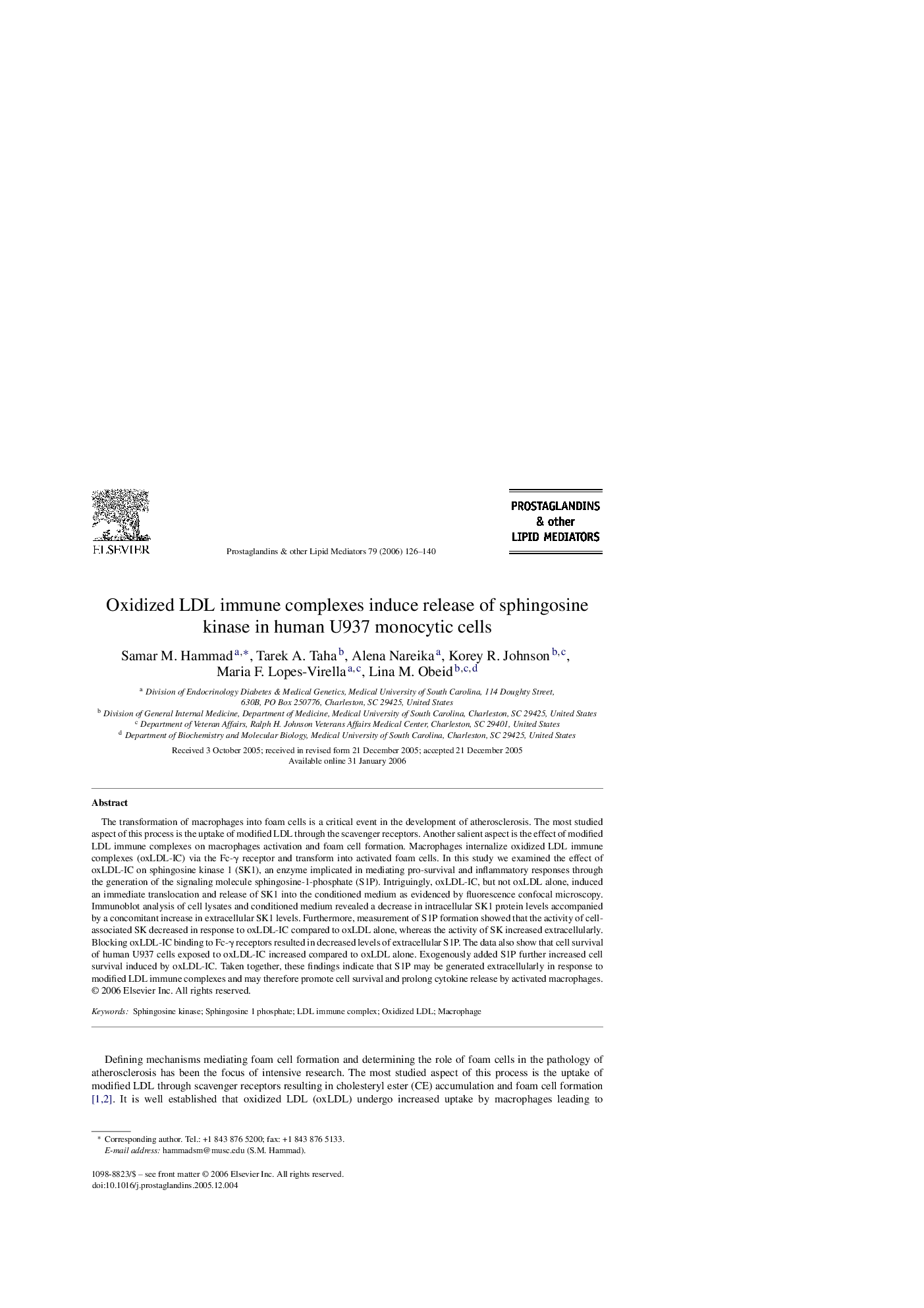| Article ID | Journal | Published Year | Pages | File Type |
|---|---|---|---|---|
| 2020048 | Prostaglandins & Other Lipid Mediators | 2006 | 15 Pages |
Abstract
The transformation of macrophages into foam cells is a critical event in the development of atherosclerosis. The most studied aspect of this process is the uptake of modified LDL through the scavenger receptors. Another salient aspect is the effect of modified LDL immune complexes on macrophages activation and foam cell formation. Macrophages internalize oxidized LDL immune complexes (oxLDL-IC) via the Fc-γ receptor and transform into activated foam cells. In this study we examined the effect of oxLDL-IC on sphingosine kinase 1 (SK1), an enzyme implicated in mediating pro-survival and inflammatory responses through the generation of the signaling molecule sphingosine-1-phosphate (S1P). Intriguingly, oxLDL-IC, but not oxLDL alone, induced an immediate translocation and release of SK1 into the conditioned medium as evidenced by fluorescence confocal microscopy. Immunoblot analysis of cell lysates and conditioned medium revealed a decrease in intracellular SK1 protein levels accompanied by a concomitant increase in extracellular SK1 levels. Furthermore, measurement of S1P formation showed that the activity of cell-associated SK decreased in response to oxLDL-IC compared to oxLDL alone, whereas the activity of SK increased extracellularly. Blocking oxLDL-IC binding to Fc-γ receptors resulted in decreased levels of extracellular S1P. The data also show that cell survival of human U937 cells exposed to oxLDL-IC increased compared to oxLDL alone. Exogenously added S1P further increased cell survival induced by oxLDL-IC. Taken together, these findings indicate that S1P may be generated extracellularly in response to modified LDL immune complexes and may therefore promote cell survival and prolong cytokine release by activated macrophages.
Related Topics
Life Sciences
Biochemistry, Genetics and Molecular Biology
Biochemistry
Authors
Samar M. Hammad, Tarek A. Taha, Alena Nareika, Korey R. Johnson, Maria F. Lopes-Virella, Lina M. Obeid,
